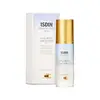What's inside
What's inside
 Key Ingredients
Key Ingredients

 Benefits
Benefits

 Concerns
Concerns

 Ingredients Side-by-side
Ingredients Side-by-side

Water
Skin ConditioningDimethicone
EmollientPropanediol
SolventGlycerin
Humectant1,2-Hexanediol
Skin ConditioningSodium Acrylates Copolymer
Dimethicone Crosspolymer
Emulsion StabilisingButylene Glycol
HumectantPseudoalteromonas Ferment Extract
HumectantGlycereth-26
HumectantLecithin
EmollientMaltodextrin
AbsorbentSodium Benzoate
MaskingPentylene Glycol
Skin ConditioningLens Esculenta Seed Extract
Skin ProtectingParfum
MaskingDisodium EDTA
Hydrolyzed Hyaluronic Acid
HumectantSodium Hyaluronate
HumectantXanthan Gum
EmulsifyingCitric Acid
BufferingBiosaccharide Gum-1
HumectantCarbomer
Emulsion StabilisingPolysorbate 20
EmulsifyingSodium Lactate
BufferingSodium Salicylate
PreservativeSalicylic Acid
MaskingPalmitoyl Tripeptide-1
Skin ConditioningPalmitoyl Tetrapeptide-7
Skin ConditioningWater, Dimethicone, Propanediol, Glycerin, 1,2-Hexanediol, Sodium Acrylates Copolymer, Dimethicone Crosspolymer, Butylene Glycol, Pseudoalteromonas Ferment Extract, Glycereth-26, Lecithin, Maltodextrin, Sodium Benzoate, Pentylene Glycol, Lens Esculenta Seed Extract, Parfum, Disodium EDTA, Hydrolyzed Hyaluronic Acid, Sodium Hyaluronate, Xanthan Gum, Citric Acid, Biosaccharide Gum-1, Carbomer, Polysorbate 20, Sodium Lactate, Sodium Salicylate, Salicylic Acid, Palmitoyl Tripeptide-1, Palmitoyl Tetrapeptide-7
Water
Skin ConditioningCyclohexasiloxane
EmollientGlycerin
HumectantAlcohol Denat.
AntimicrobialHydroxypropyl Tetrahydropyrantriol
Skin ConditioningPropylene Glycol
HumectantDipotassium Glycyrrhizate
HumectantPolysilicone-11
Polymethylsilsesquioxane
Sodium Hyaluronate
HumectantDimethicone
EmollientTocopherol
AntioxidantPhenoxyethanol
PreservativeCapryloyl Salicylic Acid
ExfoliatingOctyldodecanol
EmollientBis-PEG/PPG-16/16 PEG/PPG-16/16 Dimethicone
EmollientPEG-20 Methyl Glucose Sesquistearate
EmulsifyingAmmonium Polyacryloyldimethyl Taurate
Emulsion StabilisingCaprylyl Glycol
EmollientXanthan Gum
EmulsifyingDextrin
AbsorbentOryza Sativa Extract
AbsorbentDisodium EDTA
Caprylic/Capric Triglyceride
MaskingSodium Hydroxide
BufferingAdenosine
Skin ConditioningCitrus Nobilis Peel Oil
MaskingLimonene
PerfumingT-Butyl Alcohol
PerfumingCellulose Acetate Butyrate
Polyphosphorylcholine Glycol Acrylate
Polyvinyl Alcohol
Sodium Chloride
MaskingButylene Glycol
HumectantPentaerythrityl Tetra-Di-T-Butyl Hydroxyhydrocinnamate
AntioxidantWater, Cyclohexasiloxane, Glycerin, Alcohol Denat., Hydroxypropyl Tetrahydropyrantriol, Propylene Glycol, Dipotassium Glycyrrhizate, Polysilicone-11, Polymethylsilsesquioxane, Sodium Hyaluronate, Dimethicone, Tocopherol, Phenoxyethanol, Capryloyl Salicylic Acid, Octyldodecanol, Bis-PEG/PPG-16/16 PEG/PPG-16/16 Dimethicone, PEG-20 Methyl Glucose Sesquistearate, Ammonium Polyacryloyldimethyl Taurate, Caprylyl Glycol, Xanthan Gum, Dextrin, Oryza Sativa Extract, Disodium EDTA, Caprylic/Capric Triglyceride, Sodium Hydroxide, Adenosine, Citrus Nobilis Peel Oil, Limonene, T-Butyl Alcohol, Cellulose Acetate Butyrate, Polyphosphorylcholine Glycol Acrylate, Polyvinyl Alcohol, Sodium Chloride, Butylene Glycol, Pentaerythrityl Tetra-Di-T-Butyl Hydroxyhydrocinnamate
 Reviews
Reviews

Ingredients Explained
These ingredients are found in both products.
Ingredients higher up in an ingredient list are typically present in a larger amount.
Butylene Glycol (or BG) is used within cosmetic products for a few different reasons:
Overall, Butylene Glycol is a safe and well-rounded ingredient that works well with other ingredients.
Though this ingredient works well with most skin types, some people with sensitive skin may experience a reaction such as allergic rashes, closed comedones, or itchiness.
Learn more about Butylene GlycolDimethicone is a type of synthetic silicone created from natural materials such as quartz.
What it does:
Dimethicone comes in different viscosities:
Depending on the viscosity, dimethicone has different properties.
Ingredients lists don't always show which type is used, so we recommend reaching out to the brand if you have questions about the viscosity.
This ingredient is unlikely to cause irritation because it does not get absorbed into skin. However, people with silicone allergies should be careful about using this ingredient.
Note: Dimethicone may contribute to pilling. This is because it is not oil or water soluble, so pilling may occur when layered with products. When mixed with heavy oils in a formula, the outcome is also quite greasy.
Learn more about DimethiconeDisodium EDTA plays a role in making products more stable by aiding other preservatives.
It is a chelating agent, meaning it neutralizes metal ions that may be found in a product.
Disodium EDTA is a salt of edetic acid and is found to be safe in cosmetic ingredients.
Learn more about Disodium EDTAGlycerin is already naturally found in your skin. It helps moisturize and protect your skin.
A study from 2016 found glycerin to be more effective as a humectant than AHAs and hyaluronic acid.
As a humectant, it helps the skin stay hydrated by pulling moisture to your skin. The low molecular weight of glycerin allows it to pull moisture into the deeper layers of your skin.
Hydrated skin improves your skin barrier; Your skin barrier helps protect against irritants and bacteria.
Glycerin has also been found to have antimicrobial and antiviral properties. Due to these properties, glycerin is often used in wound and burn treatments.
In cosmetics, glycerin is usually derived from plants such as soybean or palm. However, it can also be sourced from animals, such as tallow or animal fat.
This ingredient is organic, colorless, odorless, and non-toxic.
Glycerin is the name for this ingredient in American English. British English uses Glycerol/Glycerine.
Learn more about GlycerinSodium Hyaluronate is hyaluronic acid's salt form. It is commonly derived from the sodium salt of hyaluronic acid.
Like hyaluronic acid, it is great at holding water and acts as a humectant. This makes it a great skin hydrating ingredient.
Sodium Hyaluronate is naturally occurring in our bodies and is mostly found in eye fluid and joints.
These are some other common types of Hyaluronic Acid:
Learn more about Sodium HyaluronateWater. It's the most common cosmetic ingredient of all. You'll usually see it at the top of ingredient lists, meaning that it makes up the largest part of the product.
So why is it so popular? Water most often acts as a solvent - this means that it helps dissolve other ingredients into the formulation.
You'll also recognize water as that liquid we all need to stay alive. If you see this, drink a glass of water. Stay hydrated!
Learn more about WaterXanthan gum is used as a stabilizer and thickener within cosmetic products. It helps give products a sticky, thick feeling - preventing them from being too runny.
On the technical side of things, xanthan gum is a polysaccharide - a combination consisting of multiple sugar molecules bonded together.
Xanthan gum is a pretty common and great ingredient. It is a natural, non-toxic, non-irritating ingredient that is also commonly used in food products.
Learn more about Xanthan Gum